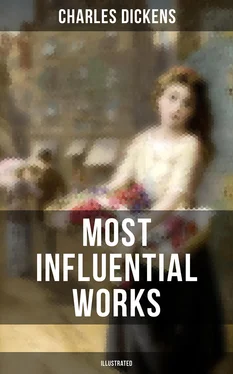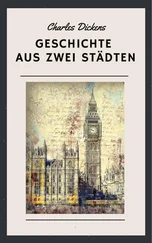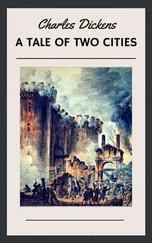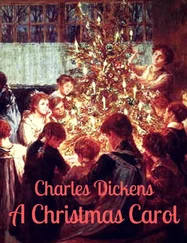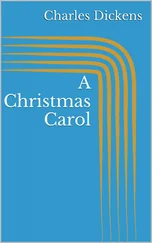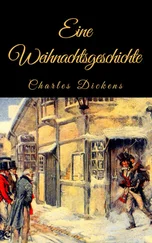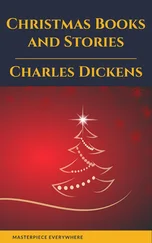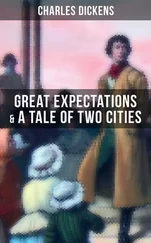Miss Peecher’s favourite pupil, who assisted her in her little household, was in attendance with a can of water to replenish her little watering-pot, and sufficiently divined the state of Miss Peecher’s affections to feel it necessary that she herself should love young Charley Hexam. So, there was a double palpitation among the double stocks and double wall-flowers, when the master and the boy looked over the little gate.
‘A fine evening, Miss Peecher,’ said the Master.
‘A very fine evening, Mr Headstone,’ said Miss Peecher. ‘Are you taking a walk?’
‘Hexam and I are going to take a long walk.’
‘Charming weather,’ remarked Miss Peecher, ‘ for a long walk.’
‘Ours is rather on business than mere pleasure,’ said the Master. Miss Peecher inverting her watering-pot, and very carefully shaking out the few last drops over a flower, as if there were some special virtue in them which would make it a Jack’s beanstalk before morning, called for replenishment to her pupil, who had been speaking to the boy.
‘Good-night, Miss Peecher,’ said the Master.
‘Good-night, Mr Headstone,’ said the Mistress.
The pupil had been, in her state of pupilage, so imbued with the class-custom of stretching out an arm, as if to hail a cab or omnibus, whenever she found she had an observation on hand to offer to Miss Peecher, that she often did it in their domestic relations; and she did it now.
‘Well, Mary Anne?’ said Miss Peecher.
‘If you please, ma’am, Hexam said they were going to see his sister.’
‘But that can’t be, I think,’ returned Miss Peecher: ‘because Mr Headstone can have no business with her .’
Mary Anne again hailed.
‘Well, Mary Anne?’
‘If you please, ma’am, perhaps it’s Hexam’s business?’
‘That may be,’ said Miss Peecher. ‘I didn’t think of that. Not that it matters at all.’
Mary Anne again hailed.
‘Well, Mary Anne?’
‘They say she’s very handsome.’
‘Oh, Mary Anne, Mary Anne!’ returned Miss Peecher, slightly colouring and shaking her head, a little out of humour; ‘how often have I told you not to use that vague expression, not to speak in that general way? When you say they say, what do you mean? Part of speech They?’
Mary Anne hooked her right arm behind her in her left hand, as being under examination, and replied:
‘Personal pronoun.’
‘Person, They?’
‘Third person.’
‘Number, They?’
‘Plural number.’
‘Then how many do you mean, Mary Anne? Two? Or more?’
‘I beg your pardon, ma’am,’ said Mary Anne, disconcerted now she came to think of it; ‘but I don’t know that I mean more than her brother himself.’ As she said it, she unhooked her arm.
‘I felt convinced of it,’ returned Miss Peecher, smiling again. ‘Now pray, Mary Anne, be careful another time. He says is very different from they say, remember. Difference between he says and they say? Give it me.’
Mary Anne immediately hooked her right arm behind her in her left hand—an attitude absolutely necessary to the situation—and replied: ‘One is indicative mood, present tense, third person singular, verb active to say. Other is indicative mood, present tense, third person plural, verb active to say.’
‘Why verb active, Mary Anne?’
‘Because it takes a pronoun after it in the objective case, Miss Peecher.’
‘Very good indeed,’ remarked Miss Peecher, with encouragement. ‘In fact, could not be better. Don’t forget to apply it, another time, Mary Anne.’ This said, Miss Peecher finished the watering of her flowers, and went into her little official residence, and took a refresher of the principal rivers and mountains of the world, their breadths, depths, and heights, before settling the measurements of the body of a dress for her own personal occupation.
Bradley Headstone and Charley Hexam duly got to the Surrey side of Westminster Bridge, and crossed the bridge, and made along the Middlesex shore towards Millbank. In this region are a certain little street called Church Street, and a certain little blind square, called Smith Square, in the centre of which last retreat is a very hideous church with four towers at the four corners, generally resembling some petrified monster, frightful and gigantic, on its back with its legs in the air. They found a tree near by in a corner, and a blacksmith’s forge, and a timber yard, and a dealer’s in old iron. What a rusty portion of a boiler and a great iron wheel or so meant by lying half-buried in the dealer’s fore-court, nobody seemed to know or to want to know. Like the Miller of questionable jollity in the song, They cared for Nobody, no not they, and Nobody cared for them.
After making the round of this place, and noting that there was a deadly kind of repose on it, more as though it had taken laudanum than fallen into a natural rest, they stopped at the point where the street and the square joined, and where there were some little quiet houses in a row. To these Charley Hexam finally led the way, and at one of these stopped.
‘This must be where my sister lives, sir. This is where she came for a temporary lodging, soon after father’s death.’
‘How often have you seen her since?’
‘Why, only twice, sir,’ returned the boy, with his former reluctance; ‘but that’s as much her doing as mine.’
‘How does she support herself?’
‘She was always a fair needlewoman, and she keeps the stockroom of a seaman’s outfitter.’
‘Does she ever work at her own lodging here?’
‘Sometimes; but her regular hours and regular occupation are at their place of business, I believe, sir. This is the number.’
The boy knocked at a door, and the door promptly opened with a spring and a click. A parlour door within a small entry stood open, and disclosed a child—a dwarf—a girl—a something—sitting on a little low old-fashioned arm-chair, which had a kind of little working bench before it.
‘I can’t get up,’ said the child, ‘because my back’s bad, and my legs are queer. But I’m the person of the house.’
‘Who else is at home?’ asked Charley Hexam, staring.
‘Nobody’s at home at present,’ returned the child, with a glib assertion of her dignity, ‘except the person of the house. What did you want, young man?’
‘I wanted to see my sister.’
‘Many young men have sisters,’ returned the child. ‘Give me your name, young man?’
The queer little figure, and the queer but not ugly little face, with its bright grey eyes, were so sharp, that the sharpness of the manner seemed unavoidable. As if, being turned out of that mould, it must be sharp.
‘Hexam is my name.’
‘Ah, indeed?’ said the person of the house. ‘I thought it might be. Your sister will be in, in about a quarter of an hour. I am very fond of your sister. She’s my particular friend. Take a seat. And this gentleman’s name?’
‘Mr Headstone, my schoolmaster.’
‘Take a seat. And would you please to shut the street door first? I can’t very well do it myself; because my back’s so bad, and my legs are so queer.’
They complied in silence, and the little figure went on with its work of gumming or gluing together with a camel’s-hair brush certain pieces of cardboard and thin wood, previously cut into various shapes. The scissors and knives upon the bench showed that the child herself had cut them; and the bright scraps of velvet and silk and ribbon also strewn upon the bench showed that when duly stuffed (and stuffing too was there), she was to cover them smartly. The dexterity of her nimble fingers was remarkable, and, as she brought two thin edges accurately together by giving them a little bite, she would glance at the visitors out of the corners of her grey eyes with a look that out-sharpened all her other sharpness.
Читать дальше
